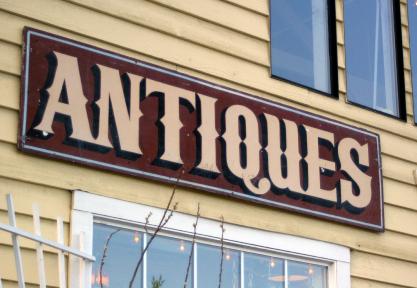How to Find Antiques
Media Gallery
In theory, you should be able to snag antique furniture at thrift stores, garage sales, and hanging out in friends’ basements. After all, that’s where everyone recommends searching first. In practice, it’s rarely that easy. If you’re serious about collecting antique furniture, here are some fool-proof places to find it.
It’s important to know what you want and do some research before you ever start shopping. If you buy a rustic wooden box “just” because it’s a rare antique, you may have a hard time getting it to fit in with your formal Victorian decorating scheme. It’s also important to know the hallmarks of the real thing. There’s nothing wrong with purchasing reproduction furniture-unless you think you’re paying for the real thing.
Antique Furniture Shops
Antique shops are a great way to start your search. Depending on where you live, you might find some real treasures. Look for a store that specializes in furniture; some antique stores carry little more than collectible figurines, dishes, and old cans and bottles. On the East Coast, you’re more likely to find old English and colonial style furniture. The Midwest is the best place to find traditionally painted Scandinavian furniture. And further west, antique furniture stores will carry more rustic, handmade items.
Beware the “hard sell.” If you’re not sure about an item, don’t be afraid to come back- just don’t wait too long, or it might be gone! And, it never hurts to get an expert opinion, especially if you’re a novice. Antique furniture collecting, like anything, requires skill. You’ll grow more confident with every transaction.
If you find a store you like, try to establish a rapport with the owner. Let him know if there are any specific pieces you’re after, and give him your business card. Often, you’ll get a call a few months later! Depending on the owner’s experience and connections, he may even be able to help you track down rare items. It never hurts to ask!
Antique Furniture Auctions
Antique auctions are another good bet if you’re only interested in genuine antiques. If you’re lucky enough to live in or near a big city, you may be able to find a local antique auction. Brush up on the lingo before you go, and always attend the preview! It allows you an up-close and personal look at any items of interest. You’ll be able to see if that dresser you’re bidding on has handmade dovetail joints, or if the table you like is still protected with the original shellac. Visiting the preview can help you determine a budget before bidding starts (very important!); prevent you from missing out on a diamond in the rough; and help you avoid bidding on pretty but worthless items.
Your next best bet is to check online. There are a surprising number of auctions on the web. As with any online transaction, you’ll want to do some fact checking before you bid. Be aware that it will be hard to determine the quality of an item from pictures alone. For rare or valuable items, you may want to hire an appraiser in the seller’s town to check things out. You should also check with the Better Business Bureau or Google “company name + consumer complaints” to see if the auction company has a history of dissatisfied customers.
Protecting Your Investment
Anytime you purchase antique auction furniture, ask for a detailed receipt. This should include not only the price, but also the age, style, and type of furniture purchased. In addition, ask to have the wood type, appraised value, and detailed information on any existing damage or restorations that have taken place. This information is important for insurance reasons and, if you ever want to sell the piece, can be a deal-closer. On the other hand, if you purchase an item only to find out later it’s a fake, the receipt can serve as evidence in a claim against the dealer.


